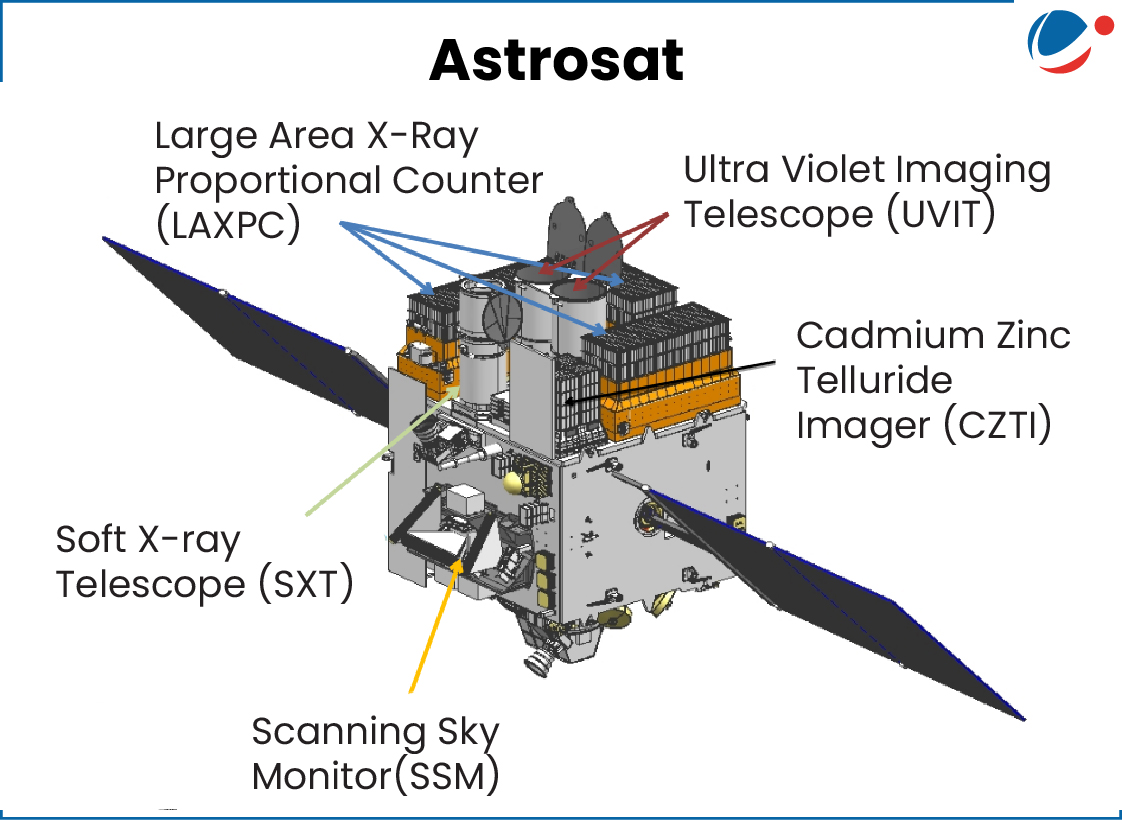Why in the News?
India's first dedicated space observatory, AstroSat, has completed 10 years since its launch.
About Astrosat

- Objective: India's first dedicated astronomy mission, designed to study celestial objects across X-ray, ultraviolet, and optical wavelengths simultaneously, offering a holistic view of cosmic phenomena.
- Launch: Launched on September 28, 2015, aboard PSLV-C30 from Sriharikota.
- Orbit: Placed in a low Earth orbit at 650 km altitude for a minimum lifespan of 5 years.
- Spectral Range: The mission spans a broad energy band from 0.3 keV to 100 keV, covering near and far UV regions, enabling exploration of both high-energy and faint astronomical sources.
Scientific Objectives of AstroSat
- Study High-Energy Phenomena: To understand high-energy processes in binary star systems containing neutron stars and black holes, offering insights into extreme cosmic environments.
- Measure Magnetic Fields: To estimate the magnetic fields of neutron stars, aiding in the study of their structure and evolution.
- Explore Star Formation: To study star birth regions and high-energy activities in star systems beyond our galaxy, expanding the understanding of galactic evolution.
- Detect Transient X-ray Sources: To identify new, short-lived X-ray sources, helping track sudden cosmic events.
- Ultraviolet Universe Survey: To conduct a limited deep-field survey of the universe in the ultraviolet spectrum, enhancing data on distant and faint celestial bodies.
Other Space and Ground observatories of India
|
Significance for India
- Scientific Leadership: Established India as a global leader in multi-wavelength astronomy (Satellites capable of simultaneous X-ray, UV, and optical observations).
- Indigenous Capability: Showcased India's ability to design and operate a complex space observatory.
- Research and Academic Growth: Enabled frontline research in astrophysics across India.
- Global Collaboration: Enhancing India's scientific reputation and fostering international partnerships in astronomy.
AstroSat marks a milestone in India's space research, deepening multi-wavelength astronomy and strengthening global scientific collaboration while reflecting the nation's growing self-reliance in space science.





